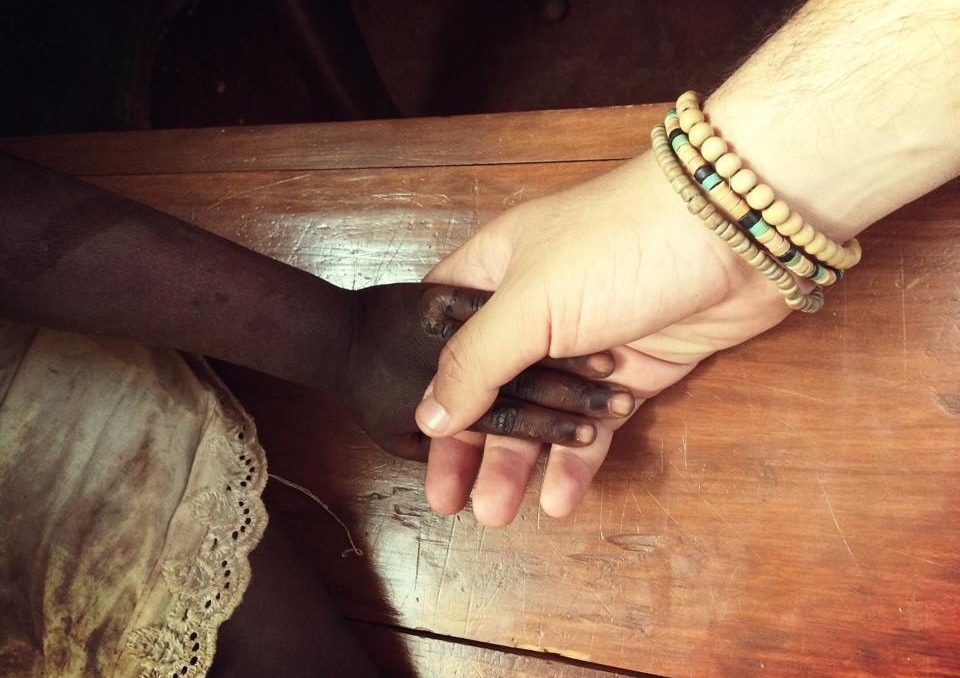The Church: Healing
Identity |ʌɪˈdɛntɪti|
noun (pl. identities)
the fact of being who or what a person or thing is, the characteristics determining who or what a person or thing is
“We contain multitudes,” wrote Walt Whitman. Identity is the ground in which our roots find a home. Drifting and unearthed roots will wander aimless and lost in a dream world of pseudo-freedom. And roots on thorny or rocky ground grow weak and vulnerable trees.
What is our identity? What is our frame of reference for the Truth, the paradigms that form the lens for our perception of Truth, the maps we use to find our way to Truth? Is it the shakeable ground of seeing the world as we are? Or is it the solid and firm ground of seeing through God’s living Word, by which He spoke things into being?
Our struggle with the question “Who am I?” is one we can not answer without knowing where we have come from and where our roots lie. So to ask “Who am I?” is to ask “Who is my Mother, “the pillar and the ground of truth” (1 Tim. 3:15)?”
“A man cannot have God as his Father if he does not have the Church as his Mother.”
Saint Cypria
The Church; my Mother, His bride. Late have I loved her as I ought, because late have I truly seen her and known her as “the Church without beginning, without end and eternal, just as the Triune God, her founder, is without beginning, without end and eternal” (St Porphyrios). Perhaps, humanity bends towards seeing things as they appear to be and not as they were created to be.
“She is a divine institution and in her dwells the whole fullness of divinity. She is an expression of the richly varied wisdom of God. She is the mystery of mysteries. She was concealed and was revealed in the last of times. The Church remains unshaken because she is rooted in the love and wise providence of God.”
St Porphyrios
Beyond a building, the Church is a deep mystery of Christ with us, an extension of the Incarnation. As Father Alexander Schmemman wrote, the church is “not an ‘essence’ or ‘being’ distinct, as such, from God, man, and the world, but is the very reality of Christ in us and us in Christ, a new mode of God’s presence and action in His creation, of creation’s life in God…She is union and unity, knowledge, communion and transfiguration.” God’s gift of this mystery to man is what endows the four walls of the church with all meaning and life as the manifestation of the Kingdom of God.
“Where the Church is, there is the Spirit, and where the Spirit is, there is the Church,” states St. Iranaeus. The Church is the Kingdom of life eternal where the descent of the Holy Spirit, the Giver of Life, renewed creation through restoration in Christ, in His incarnation, death, resurrection and glorification.
The “organ of Christ’s redeeming work” (Chrestos Androutsos) where the continuing presence of Pentecost exists, where creation is transfigured by Christ, sanctified by the Holy Spirit and finds not only communion and reconciliation but fulfillment in the revelation of the kingdom which is “joy and peace in the Holy Spirit” (Rom 14:7). The beauty of Pentecost is found in “diversities of gifts, but the same Spirit” (1 Cor 12:4). This is the same Spirit of freedom that unites us in our diversity in so that our life in the Church is vivid with distinct personalities rather than dull, rigid and uniform.
In the intersection between the visible and invisible, worshipping congregations and heavenly hosts of angels, divine and human, nature and grace, material and the spiritual, present age and the life to come; the Church is found and is our preparation “for a better country-a heavenly one.” (Heb 11:1). She is a triumphant passage from old into the new, from the kingdom of nature into the Kingdom of Grace. The paradox remains, though she abides in the world she is otherworldly; just as we “are dead and [our] life is hid with Christ in God” (Col 3:3); she is in pilgrimage and anticipation, in repentance and struggle. She is mission and vision of the salvation of all creation so that she may announce and witness to Christ, encompassing the totality of human history to offer, in Christ, the whole creation to God.
At the beating, pulsing heart of the sacramental Church is the Eucharist, our passover from this world into the Kingdom and partaking of His divine nature and immortal life. “We, who are many, are one bread, one body; for we all partake of the one bread.” (1 Cor 10:17)
“The Church is One, Holy, Catholic, and Apostolic, and she must constantly fulfill herself as oneness, holiness, catholicity, and apostolicity. Her visible oneness is to be realized as the very content of the new life (“that they may be one as we are one”) and as the unity of all in God and with God. The objective holiness of her life (the gifts of grace and sanctification which pour from all her acts) is to be fulfilled and realized in the personal holiness of her members. The catholicity (the absolute fullness of the gospel she announces and the life she communicates) is to grow into the “wholeness” of the faith and life of each community, of each Christian, and of the whole Church. Her apostolicity (her identity in time and space with the pleroma of the Church manifested at Pentecost) is to be preserved whole and undistorted by every generation, always and everywhere.”
Father Alexander Schmemmen
In the dichotomy of imperfect humanity and the sinless saints in heaven, the Church exists in a tension. We may be no strangers to the ‘Church of the penitents, the Church of those who perish’ (St Ephraim the Syrian). Wounds from our mother can taint and fracture trust, but sin of man can never affect the nature of the Church which is intrinsically linked to God. The Church is inherently heavenly and taught by the Spirit and so can not sin, fail, be deceived or choose falsehood over truth. We must fight to hold fast to Truth: “Orthodoxy does not believe merely in an ideal Church, invisible and heavenly. This ‘ideal Church’ exists visibly on earth as a concrete reality.” (Bishop K. Ware)
“The mystery of the Church consists in the very fact that together sinners become something different from what they are as individuals; this “something different” is the Body of Christ.”
John Meyendorff
To be rooted in Christ is to be rooted in His body and the dwelling place of the Spirit, the Church and the sacraments, “strengthened in the faith as you were taught and overflowing with thankfulness” (Col 2:7).
Let your roots grow deep and wide “built upon the foundation of the apostles and prophets, Jesus Christ himself being the chief corner stone” (Eph 2:20).
Sow those roots securely in Christ Who can not be torn separate from the Church since She is ‘the living image of eternity within time’ (Vladimir Lossky)
“The love of God created us in His image and likeness. He embraced us within the Church in spite of the fact that He knew of our apostasy. He gave us everything to make us gods too through the free gift of grace. For all that, we made poor use of our freedom and lost our original beauty, our original righteousness and cut ourselves off from the Church. Outside the Church, far from the Holy Trinity, we lost Paradise, everything. But outside the Church there is no salvation, there is no life. And so the compassionate heart of God the Father did not leave us exiled from His love. He opened again for us the gates of Paradise in the last times and appeared in flesh…God in His infinite love united us again with His Church in the person of Christ. On entering into the uncreated Church, we come to Christ, we enter into the realm of the uncreated. We the faithful are called to become uncreated grace, to be come participants in the divine energies of God, to enter into the mystery of divinity, to surpass our worldly frame of mind, to die to the ‘old man’ and to become immersed in God. When we live in the Church we live in Christ. This is a very fine-drawn matter, we cannot understand it. Only the Holy Spirit can teach us it.”
St Porphyrios
Check out Part V











2 Comments